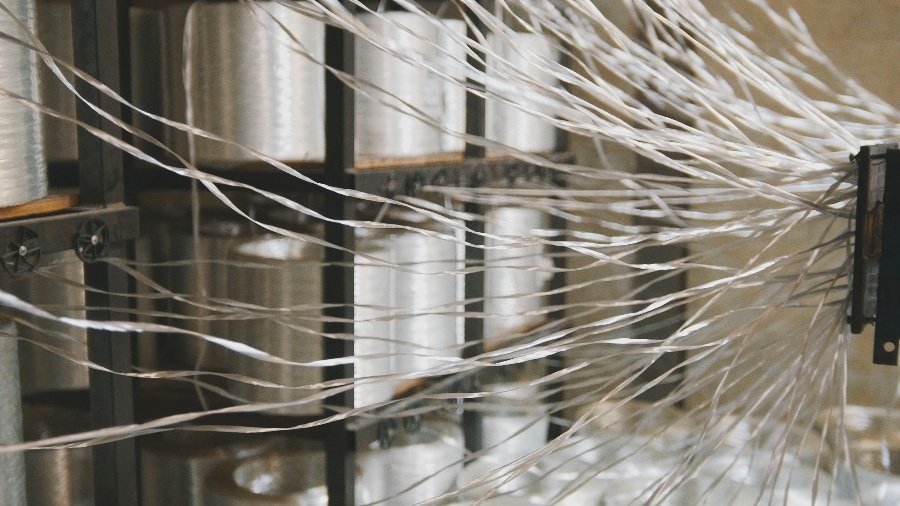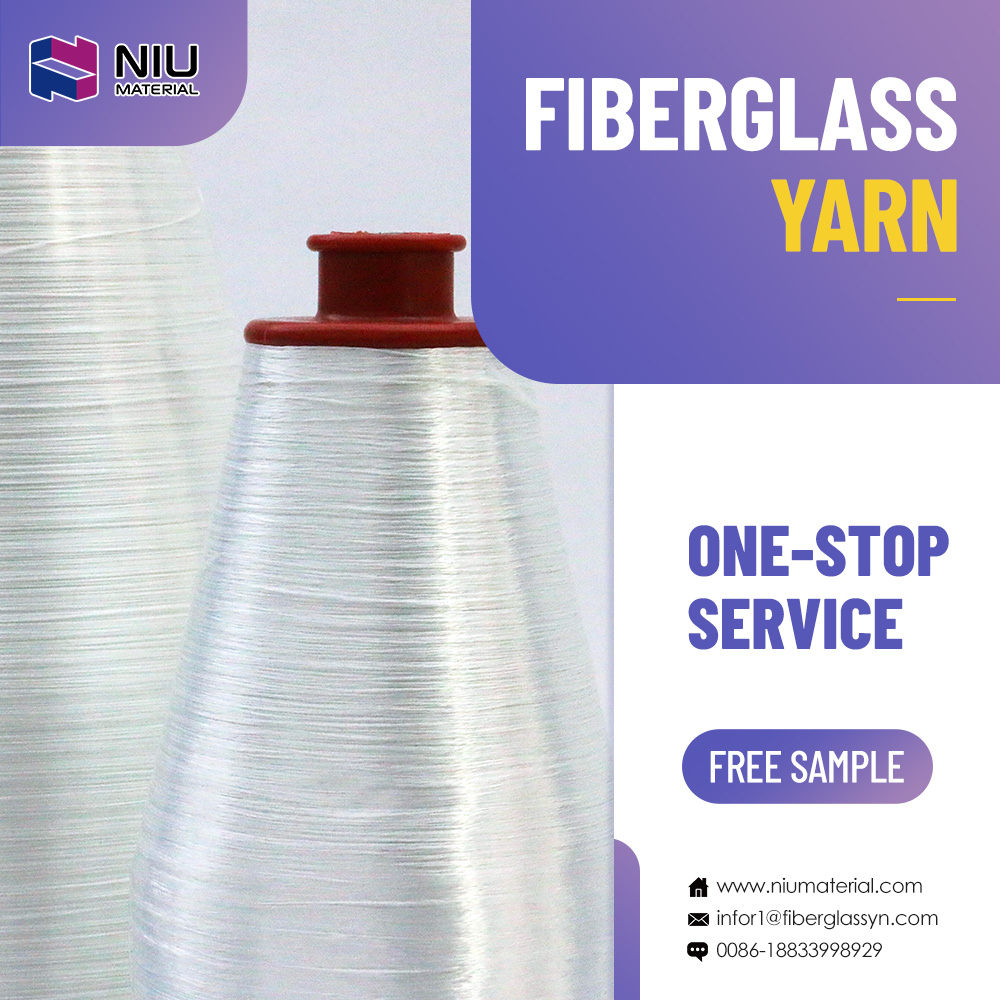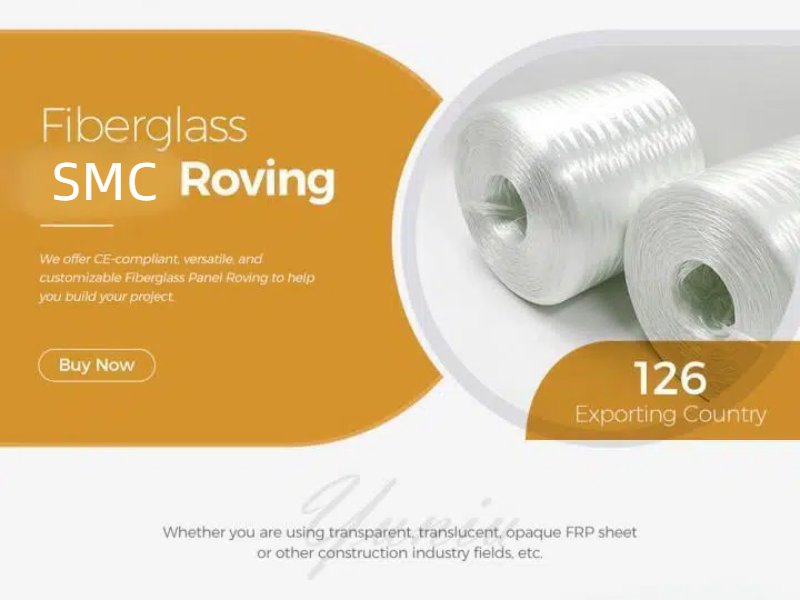
- fiberglassnicole@gmail.com
- +86-13933702587

As an important industrial material, fiberglass yarn plays a vital role in modern society. It is a slender fiber processed from glass material through a special process. It has excellent physical and chemical properties and has been widely used in many fields. From construction to automobiles, from aerospace to electronics, fiberglass yarn plays an irreplaceable role. This article will delve into the advanced manufacturing technology of texturized fiberglass yarn and its excellent performance, hoping to provide readers with a more comprehensive understanding and understanding.
The manufacturing of glass fiber yarn is a complex and precise process, involving the use of a variety of advanced technologies. The following will give a detailed introduction to its manufacturing technology from three aspects: melt forming technology, drawing process, and coating and twisting:
Melt molding technology is one of the key steps in the manufacturing of fiberglass filament yarn. In this process, the glass raw material is first melted, and then the molten glass liquid is ejected into filaments through a spinneret or a rotating spinneret. These filaments are then rapidly cooled to form the primary form of glass fibers. The key to melt molding technology is to control the temperature, spinning speed and cooling rate of the glass liquid to ensure that the diameter and quality of the filament meet the requirements.
The drawing process is the process of further stretching and processing the primary glass fiber yarn into the required diameter. In this process, the fiberglass wire yarn passes through a series of stretching mechanisms, gradually elongating and reducing the diameter, and finally forming a fine yarn. The key to the drawing process is to control the drawing speed, temperature and tension to ensure the uniformity and stability of the spun yarn.
Coating and twisting are processing steps performed to enhance the performance and functionality of texturized fiberglass yarn. In this process, the spun yarn passes through coating equipment and is coated with a layer of protective resin or other chemical materials to improve its wear resistance, corrosion resistance and high temperature resistance. Next, the coated spun yarn is twisted through twisting equipment to increase its strength and stability. The key to the coating and twisting process is to select the appropriate coating materials and twisting parameters to ensure that the performance of expanded yarn fiberglass is maximized.
From the above introduction to fiberglass filament yarn manufacturing technology, it can be seen that the application of advanced technologies such as melt molding technology, drawing process, coating and twisting provides an important guarantee for the production of fiberglass wire yarn, and also provides its superiority. Performance has laid a solid foundation.
As an important industrial material, fiberglass yarn‘s performance characteristics play a vital role in its wide range of applications.
Glass fiber yarn has excellent strength and stiffness, making it widely used in various engineering applications. Fiberglass filament yarn has higher strength and stiffness and can withstand greater tensile and compressive forces. This makes expanded yarn fiberglass an integral part of many structural materials.
Fiberglass yarn has excellent heat resistance and corrosion resistance, and can maintain stable performance under high temperatures and harsh environments. Its resistance to oxidation and corrosion makes it an ideal material for manufacturing parts and structures that are resistant to high temperatures and corrosion.
Compared to many metallic materials, glass fiber yarn is lighter in weight, which makes it very advantageous in applications where structural load reduction is required. In the automotive and aerospace fields, the use of expanded yarn fiberglass can effectively reduce the weight of car bodies and aircraft structures, and improve the fuel efficiency and performance of vehicles and aircraft.
Glass fiber yarn has good flexibility and can adapt to various complex shapes and structures. This gives expanded yarn fiberglass certain advantages in the manufacturing of complex structural parts, such as aircraft fuselages, ship hulls, etc. Its flexibility also allows fiberglass yarn to effectively absorb energy when colliding or being stressed, reducing damage caused by accidents.
To sum up, fiberglass filament yarn plays an important role in many fields with its excellent strength and stiffness, heat resistance and corrosion resistance, lightweight, flexibility and other characteristics, providing various engineering and applications. Reliable material support.
Fiberglass wire yarn has excellent strength and stiffness and can be used to strengthen building structures and improve their wind pressure and earthquake resistance. It can also be used to produce insulation materials to protect building structures from outside temperature and humidity. Moreover, fiberglass filament yarn is not easily corroded by chemical substances and can be used to produce corrosion-resistant building materials to extend the service life of building structures.
Expanded yarn fiberglass can be made into fine glass cloth, which is used in printed circuit boards (PCB), electronic component packaging, etc. in the electronic industry. It has excellent mechanical strength and heat resistance.
Expanded yarn fiberglass is often used to make electrical insulation materials, such as cable insulation layers, electrical insulation tapes, etc. It has good insulation properties and heat resistance, and can protect electrical equipment from the external environment.
Fiberglass filament yarn can be made into rope core casing, which is used to strengthen various types of ropes, rigging, cables, etc. It has the characteristics of wear resistance, corrosion resistance and high temperature resistance, and is suitable for marine, Aerospace and other fields
Fiberglass filament yarn has a low specific gravity and can be used to produce lightweight automotive parts, reduce the weight of the entire vehicle, and improve fuel economy and power performance. It can also improve the structural strength of automobile parts, enhance their impact resistance, and improve passenger safety.
In the field of aerospace, glass fiber yarn also plays an important role. Fiberglass filament yarn can be used to manufacture structural components of aerospace vehicles, reduce the weight of the aircraft, and improve load capacity and flight performance. Fiberglass wire yarn is not easily corroded by chemical substances and can be used to manufacture spacecraft shells and shields to protect spacecraft from the external environment.
With the continuous advancement of science and technology, advanced manufacturing technology plays a vital role in improving the performance of fiberglass filament yarn. In terms of nanotechnology applications, composite material technology, machine learning and intelligent manufacturing, new technical means and methods are constantly emerging, bringing new opportunities and challenges to the production and application of fiberglass wire yarn.
The application of nanotechnology in the manufacturing of glass yarns can change the microstructure and surface properties of the material, thereby improving its performance. Through the addition of nanoscale materials or surface modification, the strength, wear resistance and corrosion resistance of fiber glass yarns can be enhanced. For example, nano-oxide or nano-carbon materials are used to enhance the mechanical properties of fiberglass filament yarn and improve its tensile strength and compressive strength; nano-coating technology is used to improve the heat resistance and corrosion resistance of fiberglass yarn and increase its durability in harsh environments. service life below.
Composite material technology combines different types of materials according to certain proportions and structures to form a new material system to improve overall performance. In the manufacturing of fiberglass wire yarn, composite material technology can combine it with other materials to form fiberglass composite materials, further improving its mechanical properties, heat resistance and corrosion resistance.
With the continuous advancement of science and technology and the continuous development of society, fiberglass yarn is an important industrial material. In the future, the development of fiberglass yarn industry will face many challenges and opportunities such as sustainable development, new material application and intelligent production. Niumaterial will continue to innovate and progress, constantly adapt to market demands and technological changes, and make greater contributions to social and economic development.

If you have any questions
Please contact us for free consultation and product quotation



You can leave the specifications and contact information you need~ Our technicians will immediately organize the exclusive information for you and send it to your email!
You can leave your contact information here, and we will send you detailed specifications and application cases to make your purchase clearer~